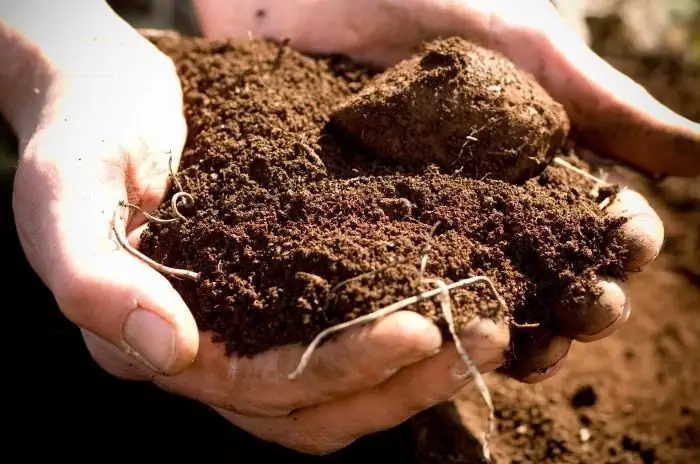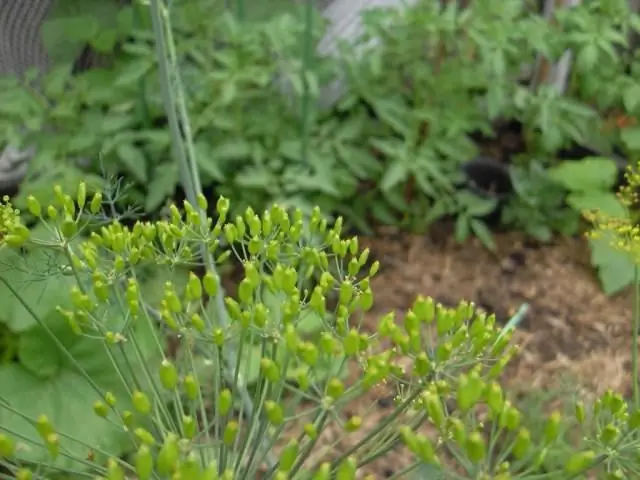2025 Author: Howard Calhoun | [email protected]. Last modified: 2025-01-24 13:10:47
Soil grading is an assessment of the state of a particular area for its fertility. Upon completion of this procedure, specialists develop recommendations for farming for agricultural producers. When carrying out appraisal, among other things, zoning of the study area is carried out with the determination of relatively homogeneous zones in terms of fertility.
What is produced for
Soil evaluation is a procedure in which specialists usually solve the following tasks:
- compare and group the soils of a district, republic, region, etc.;
- the most favorable lands for cultivation of agricultural crops are identified;
- evaluate the result of economic activity of agricultural producers;
- reveal unused reserves.

Also, experts determine the need for certain activities aimed at increasing productivity. In addition, one of the main goals of soil evaluation is, of course, the introduction of new methods.agriculture.
Preparations
Produced appraisal of land, of course, after a thorough study. Soil analysis is performed using:
- cartograms;
- soil map;
- data on the morphological state of the earth;
-
data on the physical and chemical properties of the soil.
Also, valuation is carried out taking into account data on the long-term average yield of the main agricultural crops grown in the region (at least for 5-10 years).
Main steps
Soil evaluation is a procedure in which specialists:
- process all soil data in a particular area or region mathematically or statistically;
- develop rating scales;
- determine the weighted average score.
The final stage of appraisal is always the development of practical recommendations for agricultural producers.
How statistical data processing is done
This evaluation stage in most cases includes the following steps:
- A reference plot is selected, the most productive, according to long-term statistics.
-
The characteristics of the land of the selected site are evaluated in points, the sum of which should be equal to 100 (sometimes 50). When carrying out such a procedure, for example, such properties of the soil of the reference area as pH, the percentage of humus content, the sumexchange bases, etc.
- Each of the diagnostic signs of other parts of the area is estimated in points in relation to the standard using special formulas.
- Signs are revealed that indicate the deviation of soils from typicality. At the same time, in the taiga zone, for example, such characteristics of the land as the degree of bareness, stonyness, and washout can be assessed, in the steppe zone - the presence of easily soluble s alts, solonetsism, etc. Each specific sign of soil deviation from typicality in a particular natural zone corresponds to a correction factor, taken into account when assessing the site.
- The overall average soil quality score is determined.

As indicators of soil appraisal, both properties acquired in the process of cultivation and natural properties can be taken. During this procedure, among other things, the areas most suitable for the cultivation of certain crops are identified.
What formulas can be used in mathematical analysis
When performing grading and evaluating soils in relation to the standard, various indicators are expressed according to the following formula:
B=(Pf100) / Pe, where:
B - the assessment score itself, Pf - the actual value of the indicator, Pe - the value of this indicator in the reference area.
The average bonitet score of the studied soil is determined using the following formula:
B0=(∑B/n)K,where:
∑B - the sum of certain average scores of the estimated indicators (humus, pH, etc.), n - the number of indicators taken into account, K - the correction factor for soil deviation from typicality for any characteristic.
How rating scales are developed
After carrying out mathematical analysis when performing land appraisal and economic evaluation of soils, specialists begin to systematize the collected data. In this case, two scales in points are compiled:
- on soil properties;
- according to the average yield of the main agricultural crops cultivated in the study area for 5-10 years.
The score of the second scale is determined as follows:
- Using the soil map, select several farms in the region, where land with certain properties, for which the yield is calculated, occupies 70-80% of the area.
- Based on the reporting data, the average yield of the main crops for 5-10 years is calculated. Further, the highest yield on soil with certain properties is taken as 100 points.

At the next stage of grading and economic evaluation of soils, experts check the correctness of their conclusions by comparing the scores of the first scale with the data of the second. The discrepancy in the indicators should not exceed 10%. If the scores do not match significantly, re-analysis is performed using other diagnostic indicators of the soil.
Third stage
Afterafter the scales are compiled, experts determine the weighted average score using the following formula:
B0=(BI1P1 + BI2P2 + … + BInPn) / P, where:
- P - area of soil of each type;
- BI - score for each type of soil;
- P - total area of the study area.
Systematization of results depending on the value of points - this is how the analytical stage of soil appraisal usually ends. Land valuation, as you can see, is a rather complicated procedure. After it is carried out, experts begin to develop recommendations for the use of land in the region under study.
Regression equation
Such an equation, in fact, is a mathematical model of soil productivity in a particular region. It is used when multivariate and correlation analysis is used in grading. The regression equation looks like this:
Y=a + B1X1 + B2X2 + … + BnXn, where:
B1, B2…, Bn - yield increase coefficients, X1, X2…, Xn - indicators of the factors that have the greatest impact on it, a - free term, Y - normal yield.
Indicators taken into account when combining soils into groups
Land can be distributed during appraisal taking into account the following factors:
- belonging to the same climatic province and mountain district;
- degrees of proximity in terms of basic physical and chemical properties, morphological structure, composition, supply of nutrients;
- featuresthe relief in which the soil cover was formed;
- features of soil properties that reduce its fertility, complicate its use and determine the need for various kinds of land reclamation enterprises.

What physical properties of the earth can determine its quality
The degree of soil fertility, among other things, may depend on factors such as:
- percentage of humus;
- thickness of the humus horizon;
- silt percentage;
- clay percentage;
- gross reserves of humus, nitrogen, potassium and phosphorus;
- granulometric composition;
- sum of absorbed bases.
Also, the yield of crops grown in a particular area is significantly affected by the acidity of the soil.
Land classification
Currently, a total of 7 main categories of soils are distinguished, including 37 classes:
- land suitable for arable farming;
- hayfields;
- pasture;
- unsuitable for growing agricultural crops of land;
- land potentially suitable for agriculture after land reclamation;
- unsuitable for agricultural land;
- violated.

Arable land
The soil in the areas belonging to this category is characterized by a high degree of moisture and air exchange. Such land always contains enough nutrients to grow various kinds of crops.
Category suitable for arable land, in turn, includes several classes. These include drained watersheds and mild slopes:
- light loamy and loamy carbonate;
- non-carbonate;
- sandy and sandy with increased influence of light rocks;
- with increased influence of heavy rocks, clay;
- with increased influence of boulder-pebble deposits.
This category also includes poorly drained short-term waterlogged lands of the same type. In addition, slightly erosion-hazardous gentle slopes are considered suitable for arable land:
- on loose rocks, including slightly washed away;
- loamy and clayey sloping slopes, including washed away;
- on dense rocks, including washed-out ones.
A separate class of land suitable for arable land is, of course, cultivated soils.
Hayfields
First of all, this category includes floodplain meadow lands:
- clay and loam;
- sandy and sandy.
Relate to hayfields and non-floodplain areas with the same types of soil.
Pastures
Such areas are used mainly for grazing cattle, small cattle and horses. The category of pastures includes, for example, solonetz lands and:
- automorphic;
- semihydromorphic;
- merged hydromorphic.
Also pasture land can be used:
- waterlogged;
- very stony and gravel;
- turf sands.
Which lands are considered unsuitable for growing agricultural crops
This category, in turn, includes:
- high bogs;
- stone placers;
- pebbles.
Crops are not cultivated on gravel deposits and some other types of soils.

Lands in Need of Improvement
After carrying out various kinds of reclamation measures, peat bogs, for example, can become suitable for growing agricultural crops:
- lowland and transitional peat;
- lowland and transitional minerals.
Also this category includes:
- highly saline soils;
- ravine-beam complexes;
- takyrs;
- sands without vegetation.
Lands unsuitable for agriculture
This category of land refers primarily to:
- rocks andplacers;
- glaciers.
Of course, snow-covered areas, as well as the bottom of various kinds of reservoirs, are also considered unsuitable for agriculture.
What evaluation features are most often taken into account when assessing soils
Thus, soil appraisal is a modern procedure, the theoretical basis of which is the relationship between:
- components of soil;
- soil and vegetation growing on it.
These ratios were once established by the Russian scientist V. V. Dokuchaev. He was also the first to formulate the very concept of “soil appraisal”. The Russian Soil Institute was subsequently named after this researcher.
According to the draft temporary guidelines for soil evaluation, developed by the specialists of this institution in cooperation with scientists from Rosgiprozem, for those zones in which agriculture is provided with moisture (taiga and burozem-forest), it is recommended to take into account the following assessment factors:
- pH s alt extract;
- humus content in arable soil;
- hydrolytic acidity;
- mobile phosphorus content;
- mechanical composition of the soil;
- sum of absorbed bases;
- degree of base saturation.
For mountainous and foothill areas, forest-steppe zones, areas depleted and insufficiently provided with moisture:
- humus content intopsoil;
- base absorption capacity;
- degree of base saturation;
- soil solution reaction;
- mechanical composition.
For irrigated agriculture zones:
- mechanical composition;
- degree of drainage and cultivation of the land.
In accordance with the characteristics of the soil in a particular area, the list of diagnostic features taken into account may be specified.

Existing methods of soil appraisal
Such a procedure can be carried out, for example, according to the following methods:
- Tyumentsevskaya. In this case, the percentage of humus in the soil is mainly taken into account.
- Burlakovskaya. When using this technique, soil properties and spring wheat yields are taken as a basis.
When conducting research on land plots, among other things, SEI can be taken into account - the value of the soil-ecological index. This method of soil evaluation was developed by I. I. Karmanov from the Soil Institute.
Recommended:
Planning and economic department: its functions and tasks. Regulations on the planning and economic department

Planning and economic departments (hereinafter PEO) are created for the effective organization of the economy of organizations and enterprises. Although often the work of such departments is not clearly regulated. How should they be organized, what structure should they have and what functions should they perform?
What is the meaning of labor discipline? The concept, essence and meaning of labor discipline

It is difficult to overestimate the importance of labor discipline. Indeed, in labor relations, the employer and employee often face situations where both consider themselves right, but their opinions do not lead to agreement. Labor discipline legally regulates many points in which disputes and dissatisfaction among participants in labor relations simply do not arise. The next article is about the main points of labor discipline
Logistics concept: concept, basic provisions, goals, objectives, stages of development and application

In the article we will talk about the concept of logistics. We will consider this concept in detail, and also try to understand the intricacies of logistics processes. In the modern world, this area occupies a rather significant place, but few people have a sufficient idea about it
Soil analysis - a comprehensive assessment of the state of the soil cover

Due to man-made activities, the soil becomes a place of storage of a large amount of harmful substances. Soil analysis is used to assess the general ecological state and safety of the soil cover, determine the chemical composition and suitability for agricultural activities
What kind of soil do carrots like? Soil for carrots and beets, onions and dill

Carrots are included in the main list of crops grown by Russian summer residents and gardeners. Like all root crops, this plant is not particularly demanding on development conditions, however, in order to get a rich harvest, it will not be superfluous to initially decide what kind of soil carrots love and correlate its requirements with the capabilities of a particular site

